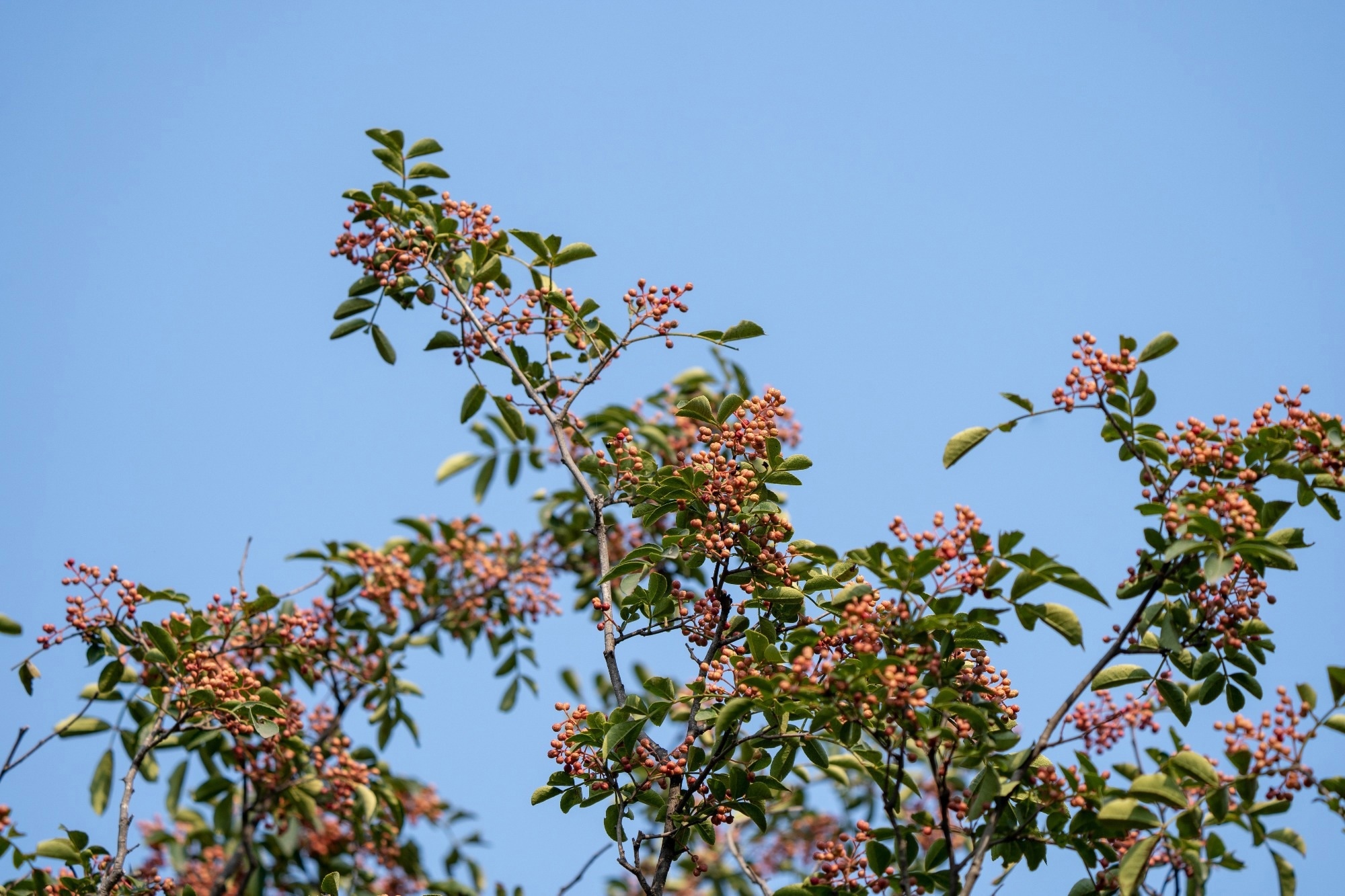 By Pooja Toshniwal PahariaReviewed by Lauren HardakerMay 23 2025
By Pooja Toshniwal PahariaReviewed by Lauren HardakerMay 23 2025A recent study in npj Science of Food investigates natural deep eutectic solvents (NADESs) as an environmentally friendly option to extract essential oils (EOs) from fruits of the tree Zanthoxylum bungeanum. The researchers also evaluated the antibacterial potency of the EOs.
Demand for plant-derived EOs to replace food-grade chemical preservatives and prevent food contamination by pathogenic bacteria is increasing. EOs extracted from Zanthoxylum bungeanum treated with NADES showed strong antibacterial activity due to increased α-terpineol content.

Image credit: JIANG TIANMU/Shutterstock.com
Concerns about the long-term health effects of synthetic preservatives are prompting a global shift toward natural alternatives. Plant-derived essential oils, extracted from roots, bark, leaves, flowers, and fruits, have shown promising antibacterial properties. Well-known examples include clove, cinnamon, oregano, and thyme oils.
There’s been a shift toward natural preservatives over synthetic chemicals. However, plant-based EO extraction can impact the final product and often results in low yields.
Methods such as supercritical carbon dioxide, organic solvents, and hydro-distillation alter EO solubility, stability, and volatility. Pretreatment with enzymes, microwaves, or ultrasonics is also needed to improve efficiency and consistency.
NADESs offer a particularly sustainable and efficient solution.
NADES are made by mixing molecules with water in specific ratios that enable them to donate or accept hydrogen from living cells. NADES treatment facilitates EO extraction by dissolving cellulose in the cell walls of plants. This releases active ingredients and metabolites.
The type of hydrogen bond donors and acceptors is critical for NADES formation and affects the efficiency of compound extraction.
Summary of the Review
In this study, researchers evaluated the effects of NADES treatments on Zanthoxylum bungeanum EO yield and antibacterial activity.
The team treated 30 g of Z. bungeanum pericarp powder with different NADES solvents. NADES treatments included choline chloride-lactic acid (Ch-LA), Ch-MA, Ch-VA, Ch-GlU, and choline chloride-citric acid (Ch-CA). The researchers ultrasound-treated the mixtures. They then added deionized water and hydro-distilled the mixtures for three hours to extract essential oils from Z. bungeanum fruits.
Gas chromatography–mass spectrometry (GC–MS) identified the chemical compositions. GC–MS spectral peaks showed the relative content of each component.
The team also tested antibacterial performance against Escherichia coli and Staphylococcus aureus, comparing results with traditional preservatives like sodium benzoate and potassium sorbate. Inhibition zone diameters (IZDs) and minimum inhibitory concentrations (MICs) were measured to determine antibacterial activity.
Time-kill assays assessed the extent and efficacy of antibacterial activity based on optical density and culture duration. Scanning electron microscopy (SEM) revealed microstructural changes in the bacterial strains.
Results
Z. bungeanum essential oil yield improved from 4.67 % (untreated group) to 6.42 % after choline chloride-lactic acid (Ch-LA) treatment. The team noted improvements of 5.63 %, 4.81 %, 4.33 %, and 3.81 % upon Ch-MA, Ch-Gly, Ch-Glu, and Ch-CA treatments, respectively.
The results show that choosing the right NADES is crucial for improving the essential oil yield from Z. bungeanum pericarps.
The team identified 48 Z. bungeanum essential oil compounds in the NADES-treated group and 30 compounds in the untreated group. The relative amount of the primary components of Z. bungeanum essential oils differed by NADES type.
The researchers noted higher terpene content in groups treated with Ch-MA (47 %), Ch-Gly (44 %), no treatment (42 %), Ch-LA (42 %), Ch-CA (39 %), and Ch-Glu (38 %).
Acid-based NADES treatments significantly enhanced α-terpineol content, increasing it to 15 % to become the primary component of Z. bungeanum essential oils obtained after Ch-CA treatment. Compared to no treatments, the team observed that the relative content of α-terpineol significantly increased by 158 %, 123 %, and 138 % after Ch-CA, Ch-LA, and Ch-MA treatment, respectively.
Higher α-terpineol content correlated with stronger antibacterial activity. Oils from Ch-CA treatment showed the most potent effects, producing inhibition zones of 29 mm and MIC values of 1.4 mg/mL (for S. aureus) and 2.8 mg/mL (for E. coli). Isolated α-terpineol alone had MICs of 0.7 and 1.4 mg/mL, respectively.
The mechanism behind this effect involves membrane disruption. α-Terpineol destabilizes bacterial cell membranes, increases protein leakage, and interferes with DNA integrity, eventually leading to cell death. SEM images confirmed visible damage to bacterial surfaces, supporting these findings.
Final Thoughts
NADES treatments increase the yield and antibacterial potency of Z. bungeanum fruit extracts. In particular, Ch-CA (comprising choline chloride and lactic acid in a 1:2 molar ratio) was the most effective, thanks to its ability to boost α-terpineol levels.
These insights could guide the food and agriculture industries in developing natural preservative strategies that are both sustainable and effective against bacterial contamination.
Download your PDF copy now!
Journal Reference
Zhu, Y., et al. (2025). Proper NADES treatment improved Zanthoxylum bungeanum essential oil yield and boosted α-terpineol antibacterial efficacy. npj Sci Food. DOI: https://doi.org/10.1038/s41538-025-00437-4